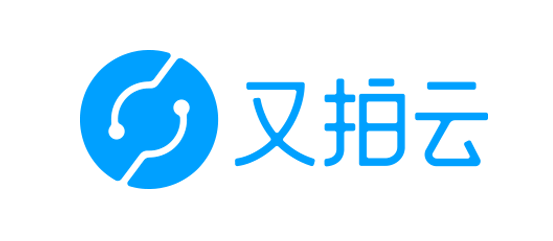ginbind 的实现过程-一起来看gin源码吧
是的,没错。
如果你用过 gin 那么你一定知道,gin 中绑定参数的方式很零散。 c *gon.Context 给你提供了很多中方法, 例如BindHeader, BindURI 等等, 但是如果想要绑定 reqeust 中不同地方的参数, 那对不起咯,并没有。
另外, gin 中的 Bind 接口, 默认是包含了 参数验证 validate 功能的, 因此如果你想直接使用默认的绑定方法, 就会出现很多验证不通过的情况。这里有一公升的泪水。
鉴于以上两点, 不得不自己改造 gin, 然后提 PR
feat: add methods c.BindCookie(obj) from cookie and c.BindRequest(obj) from http request #2812
。
然而, 我自己也觉得估计被合并的机会太小了, 对原来的 binder 的改造和破坏有点大。
那么,开始吧
c.Bind
gin 中有一个绑定方法 c.Bind(obj) 是一个动态绑定器, 使用它不需要传入什么方法, 就可以绑定 req.Body。
源码如下,
https://github.com/gin-gonic/gin/blob/v1.7.4/context.go#L661
1
2
3
4
5
6
7
8
9
10
11
12
| // ShouldBind checks the Content-Type to select a binding engine automatically,
// Depending the "Content-Type" header different bindings are used:
// "application/json" --> JSON binding
// "application/xml" --> XML binding
// otherwise --> returns an error
// It parses the request's body as JSON if Content-Type == "application/json" using JSON or XML as a JSON input.
// It decodes the json payload into the struct specified as a pointer.
// Like c.Bind() but this method does not set the response status code to 400 and abort if the json is not valid.
func (c *Context) ShouldBind(obj interface{}) error {
b := binding.Default(c.Request.Method, c.ContentType())
return c.ShouldBindWith(obj, b)
}
|
调用了 binding.Default() 方法, 通过 req.Method 和 content-type 选择了一个 绑定器 。 使用 c.ShouldBindWith(obj,b) 执行数据绑定。
这里就不展开了, 点进去之后是一个 switch 表达式, 返回一个 绑定器
https://github.com/gin-gonic/gin/blob/v1.7.4/binding/binding.go#L90
c.ShouldBindWith
跟随 c.ShouldBindWith 来到
context.go#L703
行, 这里直接调用 c.Bind() 并返回了结果。
跟随 c.Bind() 来到
binding.go#L30
行, 可以看到,这里是一个接口。
https://github.com/gin-gonic/gin/blob/v1.7.4/context.go#L700
https://github.com/gin-gonic/gin/blob/v1.7.4/binding/binding.go#L30
因此, 只要满足了 Binding 接口的的绑定器, 就能使用 c.ShouldBindWith
1
2
3
4
5
6
7
8
9
10
11
12
13
14
| // Binding describes the interface which needs to be implemented for binding the
// data present in the request such as JSON request body, query parameters or
// the form POST.
type Binding interface {
Name() string
Bind(*http.Request, interface{}) error
}
// BindingBody adds BindBody method to Binding. BindBody is similar with Bind,
// but it reads the body from supplied bytes instead of req.Body.
type BindingBody interface {
Binding
BindBody([]byte, interface{}) error
}
|
绑定器 binders
重新跟随 binding.Defualt 来到
binding.go#L74
行, 可以看到这里内置了很多绑定器, 有些都是在 README.md 上没有介绍的,是否有介绍取决于提PR的人是否更新了 README。
1
2
3
4
5
6
7
8
9
| // These implement the Binding interface and can be used to bind the data
// present in the request to struct instances.
var (
JSON = jsonBinding{}
XML = xmlBinding{}
// ... 省略
Uri = uriBinding{}
Header = headerBinding{}
)
|
https://github.com/gin-gonic/gin/blob/v1.7.4/binding/binding.go#L74
随意点一个点一个进去, 可以看到 binders 是如何实现具体绑定数据操作的
例如这里的
uri.go
https://github.com/gin-gonic/gin/blob/v1.7.4/binding/uri.go
1
2
3
4
5
6
| func (uriBinding) BindUri(m map[string][]string, obj interface{}) error {
if err := mapUri(obj, m); err != nil {
return err
}
return validate(obj)
}
|
然后很遗憾的是, 所有 binders 都是返回前都进行了 validate(obj) ,这也就是我之前说的公升泪和汗水。
如果参数带有 validate 相关的 tag, 无法在一个 Params 结构体中写入所有需要的参数。 然后通过多次调用相关的绑定方法完成所需参数的赋值。
1
2
3
4
5
6
7
8
9
| // 这里会出问题
type MyParams{
Age int `form:"age" required:"...."`
Name int `uri:"age" required:"...."`
}
var obj=&MyParams{}
err = c.BindQuery(obj)
err = c.BindUri(obj)
|
那么操作阶段就很明显了,
- 自己创建一个 binder , 实现所有的绑定逻辑。
- 拆分一下原生的binder 的
bind 和 validate 逻辑, 还是自己创建一个 binder ,复用 bind 逻辑 返回前在执行才执行一次 validate
我这么懒, 肯定选第二种咯
改造开始
gin 原生拆分接口
为了能够复用原生的绑定逻辑, 我把原来的 Binding 接口增加了一个方法 BindOnly。
- 新增加的
BindOnly 方法只对数据进行绑定,不做任何 validate 的操作。 Bind 对外保持保持一致,依旧 validate 之后返回数据, 因此对 BindOnly 的返回结果进行 validate 就行了。
并且对外暴露了两个方法, 使用 BindOnly 就可以解决用户自由组合 的问题。
1
2
3
4
5
| type Binding interface {
Name() string
Bind(*http.Request, interface{}) error // with validate
BindOnly(*http.Request, interface{}) error // without validate
}
|
下面是 queryBinding 的对比, 其他类似。
origin query binder
1
2
3
4
5
6
7
8
| // origin
func (queryBinding) Bind(req *http.Request, obj interface{}) error {
values := req.URL.Query()
if err := mapForm(obj, values); err != nil {
return err
}
return validate(obj)
}
|
new query binder
1
2
3
4
5
6
7
8
9
10
11
12
13
14
15
16
17
18
19
| // new
func (b queryBinding) Bind(req *http.Request, obj interface{}) error {
// 先 BindOnly
if err := b.BindOnly(req, obj); err != nil {
return err
}
// 数据验证
return validate(obj)
}
func (queryBinding) BindOnly(req *http.Request, obj interface{}) error {
values := req.URL.Query()
if err := mapForm(obj, values); err != nil {
return err
}
return nil
}
|
ginbinder 设计
怎么锁定数据来源
先来看看一个 http request 请求是怎么样的
1
2
3
4
5
6
7
8
| POST http://127.0.0.1:9881/demo1/zhangsan?money=1000
Content-Type: application/json
Accept-Language: en-GB,en-US;q=0.8,en;q=0.6,zh-CN;q=0.4
Cookie: Authorization=auth123123;
{
"replicas":5
}
|
URI 参数: zhangsan
Query参数: money=1000
Header 参数: content-type: application/json …
Cookie 参数: Authorization=auth123123;
Body 参数: {"replicas":5}
按照以下这样, 就设计出了了一个参数, 其结构与 Request 请求体类似
1
2
3
4
5
6
7
8
9
| type Params struct {
Name string `uri:"name"`
Money int `query:"money"`
ContentType string `header:"Content-Type"`
Authorization string `cookie:"Authorization"`
Data struct {
Replicas int `json:"replicas"`
} `body:""`
}
|
非 Body 数据处理
对于非 Body 数据, gin 原生已经为了提供了绑定方法, 之前我们已经改造出了 BindOnly 方法, 直接使用即可。所以这部分相对简单。
但是,在对 Query 的处理时, 遇到了一个些问题。 由于 gin 之前对 Query 的处理使用时 form tag。这个在 POST 提交 form 表达的的时候会产生变量名的冲突。 因此这里使用了 query tag 名。
正好, 在 gin 提供了方法 mapFormByTag, 可以方便的绑定的自定义的的 tag。
https://github.com/gin-gonic/gin/blob/v1.7.4/binding/form_mapping.go#L31
Body 数据处理
在处理这部分的时候, 需要考虑
- 由于原生
mapFormByTag 是递归处理 params 的, 所以要如何屏蔽 非body 的影响。 - 如何将
params.Data 和 req.Body 对应起来。
这部分处理, 用到了 go 的 反射 , 想办法通过反射,把 body tag 的结构体返回, 然后调用原生的 BindBodyOnly 方法即可。
https://github.com/tangx/ginbinder/blob/v0.0.1/binding/request.go#L76-L101
反射找 tag 只能算是基本操作
1
2
3
4
5
6
7
8
9
10
| // find body struct
if reflect.Indirect(vf).Kind() == reflect.Struct {
// body must not has tag "query"
if hasTag(vf, "query") || hasTag(vf, "header") ||
hasTag(vf, "cookie") || hasTag(vf, "uri") {
panic(ErrInvalidTagInRequestBody)
}
return vf.Addr().Interface()
}
|
但是需要注意的是
reflect.Indirect 获取对象的真实类型, 在进行比较,否则 vf 是指针时,无法正确比对。- 在返回时
return vf.Addr().Interface() 需要首先通过 vf.Addr() 的 vf 的指针, 否则 params.Data 时结构体时,后续无法绑定数据。 - 为了解决 body 中的 tag 污染, 就强制 tag 出现违禁词就 panic。
封装一下
有了自建的 request binder 之后, 就来简单的封装一下, 让调用更简单。
1
2
3
4
5
6
7
8
9
10
| func ShouldBindRequest(c *gin.Context, obj interface{}) error {
// 为了获取 uri 的数据
params := make(map[string][]string)
for _, v := range c.Params {
params[v.Key] = []string{v.Value}
}
// 使用自建的 request binder
return binding.Request.Bind(obj, c.Request, params)
}
|


